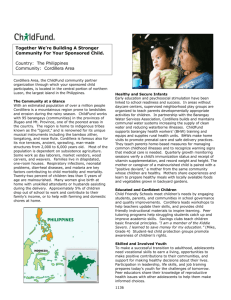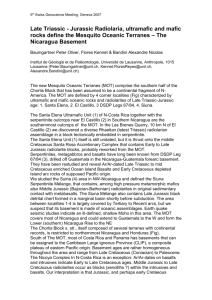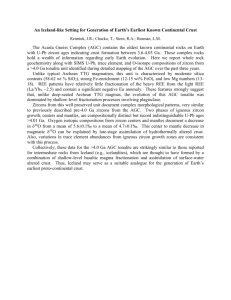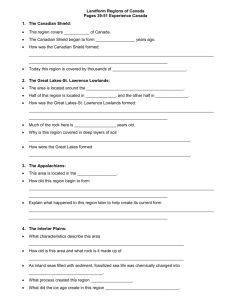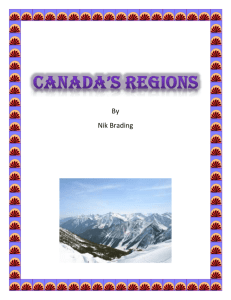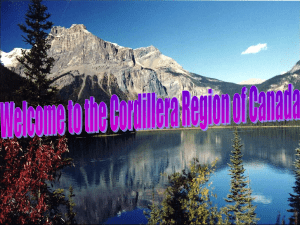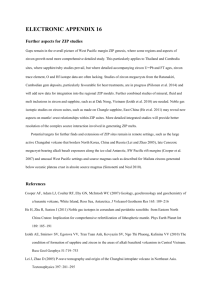Abstract Title - SWISS GEOSCIENCE MEETINGs
advertisement
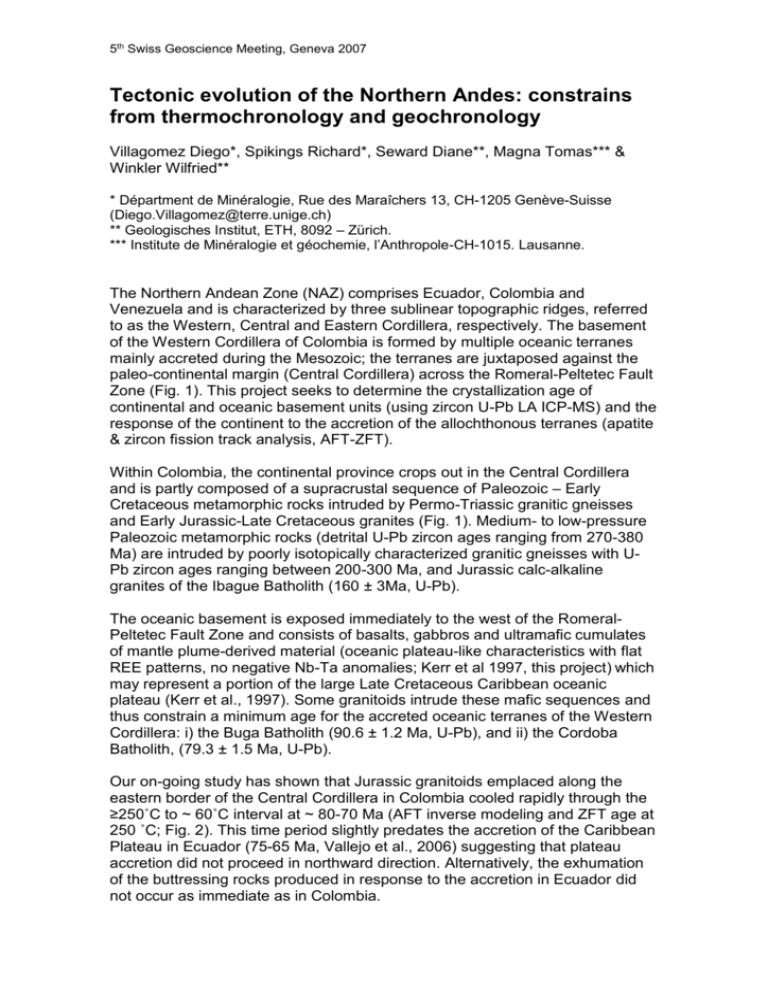
5th Swiss Geoscience Meeting, Geneva 2007 Tectonic evolution of the Northern Andes: constrains from thermochronology and geochronology Villagomez Diego*, Spikings Richard*, Seward Diane**, Magna Tomas*** & Winkler Wilfried** * Départment de Minéralogie, Rue des Maraîchers 13, CH-1205 Genève-Suisse (Diego.Villagomez@terre.unige.ch) ** Geologisches Institut, ETH, 8092 – Zürich. *** Institute de Minéralogie et géochemie, l’Anthropole-CH-1015. Lausanne. The Northern Andean Zone (NAZ) comprises Ecuador, Colombia and Venezuela and is characterized by three sublinear topographic ridges, referred to as the Western, Central and Eastern Cordillera, respectively. The basement of the Western Cordillera of Colombia is formed by multiple oceanic terranes mainly accreted during the Mesozoic; the terranes are juxtaposed against the paleo-continental margin (Central Cordillera) across the Romeral-Peltetec Fault Zone (Fig. 1). This project seeks to determine the crystallization age of continental and oceanic basement units (using zircon U-Pb LA ICP-MS) and the response of the continent to the accretion of the allochthonous terranes (apatite & zircon fission track analysis, AFT-ZFT). Within Colombia, the continental province crops out in the Central Cordillera and is partly composed of a supracrustal sequence of Paleozoic – Early Cretaceous metamorphic rocks intruded by Permo-Triassic granitic gneisses and Early Jurassic-Late Cretaceous granites (Fig. 1). Medium- to low-pressure Paleozoic metamorphic rocks (detrital U-Pb zircon ages ranging from 270-380 Ma) are intruded by poorly isotopically characterized granitic gneisses with UPb zircon ages ranging between 200-300 Ma, and Jurassic calc-alkaline granites of the Ibague Batholith (160 ± 3Ma, U-Pb). The oceanic basement is exposed immediately to the west of the RomeralPeltetec Fault Zone and consists of basalts, gabbros and ultramafic cumulates of mantle plume-derived material (oceanic plateau-like characteristics with flat REE patterns, no negative Nb-Ta anomalies; Kerr et al 1997, this project) which may represent a portion of the large Late Cretaceous Caribbean oceanic plateau (Kerr et al., 1997). Some granitoids intrude these mafic sequences and thus constrain a minimum age for the accreted oceanic terranes of the Western Cordillera: i) the Buga Batholith (90.6 ± 1.2 Ma, U-Pb), and ii) the Cordoba Batholith, (79.3 ± 1.5 Ma, U-Pb). Our on-going study has shown that Jurassic granitoids emplaced along the eastern border of the Central Cordillera in Colombia cooled rapidly through the ≥250˚C to ~ 60˚C interval at ~ 80-70 Ma (AFT inverse modeling and ZFT age at 250 ˚C; Fig. 2). This time period slightly predates the accretion of the Caribbean Plateau in Ecuador (75-65 Ma, Vallejo et al., 2006) suggesting that plateau accretion did not proceed in northward direction. Alternatively, the exhumation of the buttressing rocks produced in response to the accretion in Ecuador did not occur as immediate as in Colombia. 5th Swiss Geoscience Meeting, Geneva 2007 REFERENCES Kerr, A.C., Marriner, G.F., Tarney, J., Nivia, A., Saunders, A.D., Thirlwall, M.F.& Sinton, C.W., 1997. Cretaceous Basaltic Terranes in Western Colombia: Elemental, Chronological and Sr-Nd Isotopic Constraints on Petrogenesis. Journal of Petrology, 38, 677 – 702. Vallejo, C., Spikings R., Luzieux L., Winkler W., Chew D., & Page L., 2006. The early interaction between the Caribbean Plateau and the NW South American Plate. Terranova 18; 264-269.
